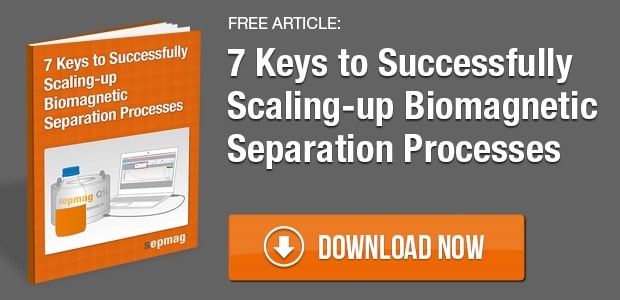Magnetic separation techniques are becoming more and more versatile as researchers take advantage of this technology to tackle everyday problems and come up with innovative solutions. One striking example of this innovation capacity is the technique developed recently by Ziyuan Wang and colleagues. These researchers combined magnetic separation beads with bacteriophages to selectively isolate bacteria. Since they wanted to purify Escherichia coli from samples with high affinity and specificity they used T7 bacteriophages to act as binding molecules, similarly to how normally antibodies are used.
The bacteriophage particles were then biotinilated by fusing a biotin acceptor peptide with the capsid protein gene, so they could bindto streptavidin coated magnetic beads in the right position. The genetic insert allows the virus to be biotinilated in vivo, keeping the viral characteristics that make the virus bind to the bacterial envelope. Therefore,the magnetic beads become bacteriophage labeled and can then bind to E. colito separate the bacteria from solution in a magnetic sorting apparatus. This protocol was highly efficient and fast, detecting 86.2% of E. coli in solution just in 20 minutes. It also allowed a low detection limit to be established, even in the absence of pre-enrichment steps, in the order of 100 colony forming units per milliliter.
This raises possibilities for the detection of not only E. coli but other bacteria, which can be a valuable diagnosis tool since it takes less time than doing a culture or PCR detection. Once again, biomagnetic separation proves to be a precious technology with a huge potential to expand its applications.
Development of a novel bacteriophage based biomagnetic separation method as an aid for sensitive detection of viable Escherichia coli.Wang, Z., Wang, D., Chen, J., Sela, D. A. &Nugen, S. R. Analyst (2015).doi:10.1039/c5an01769f
Related news:
- Narrowing the size distribution of a magnetic nanoparticle sample
- Magnetic force, Drag force, and Magnetic Nanoparticle Diameter
- Detection of Staphylococcus aureus using vancomycin coupled magnetic beads





